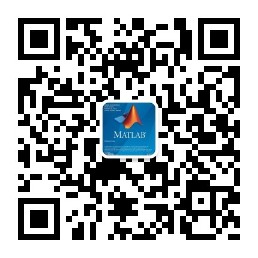博文
[转载]【信息技术】【2005】移动摄像机采集视频中的目标跟踪与活动识别
||
本文为瑞典于默奥大学(作者:SannaAgren)的硕士论文,共241页。
近年来,随着对可部署监视系统需求的不断增加,目标跟踪和活动识别越来越受到研究界的关注。本论文对监视系统和跟踪系统的两个组成部分进行了识别。特别是对于跟踪部分,我们提出了两种不同的方法来跟踪移动摄像机采集的视频目标,每种方法都使用不同的对象形状表示。第一种方法是在前视红外图像(FLIR)中跟踪目标的质心,适用于机载视频中看起来很小的目标。第二种方法跟踪物体的完整轮廓,适用于更高层次的视觉问题,如活动识别、辨识和分类。利用轮廓跟踪器跟踪到的轮廓,我们提出了一种新的表示方法,称为动作草图,用于识别人类活动。
机载图像中的目标跟踪:从飞行器上获得的图像通常看起来很小,可以用圆形或矩形等几何图形表示。目标跟踪器在第一帧检测到目标位置后,对由形状模型定义的目标区域强度和局部标准差进行建模。然后,它通过计算均值偏移向量来跟踪目标,该向量使假设对象的核分布与其先验值之间的距离最小。当传感器的自身运动导致目标运动超过跟踪模块的工作极限时,利用连续帧的Gabor响应进行多分辨率全局运动补偿。在AMCOM FLIR数据集上的实验表明,该方法将自动模型更新和全局运动补偿结合在一个框架内,具有较强的鲁棒性。
轮廓跟踪:轮廓跟踪是在判别分析的基础上,通过将初始轮廓向正确的目标边界演化来完成的,该过程被表述为一个变分计算问题。一旦轮廓被初始化,该方法将生成一个在线的物体形状模型,以及物体和背景区域的颜色和纹理优先级。然后根据目标和背景模型特征的区分特性,对区域的先验纹理和颜色PDF进行融合。然后用该模型计算后验轮廓似然,并通过最大后验估计过程得到演化,该过程在所提出的能量泛函的梯度上升方向上更新轮廓。在遮挡过程中,使用在线形状模型来完成缺失的目标区域。提出的能量泛函通过在虚拟物体轮廓周围定义的支持区域,将常用的基于边界和基于区域的轮廓方法统一到一个框架中。我们使用多个实数序列测试了所提出的轮廓跟踪器的鲁棒性,并定性地验证了目标轮廓被完美地跟踪。
Due to increasing demand on deployable surveillance systems in recent years, objecttracking and activity recognition are receiving considerable attention in the research community. This thesis contributes to both the tracking and the activity recognition componentsof a surveillance system. In particular, for the tracking component, we propose two differentapproaches for tracking objects in video acquired by mobile cameras, each of which uses adifferent object shape representation. The first approach tracks the centroids of the objectsin Forward Looking Infrared Imagery (FLIR) and is suitable for tracking objects that appearsmall in airborne video. The second approach tracks the complete contours of the objects,and is suitable for higher level vision problems, such as activity recognition, identificationand classification. Using the contours tracked by the contour tracker, we propose a novelrepresentation, called the action sketch, for recognizing human activities.
Object Tracking in Airborne Imagery: Images obtained from an airborne vehicle generally appear small and can be represented by geometric shapes such as circle or rectangle.After detecting the object position in the first frame, the proposed object tracker models theintensity and the local standard deviation of the object region defined by the shape model.It then tracks the objects by computing the mean-shift vector that minimizes the distancebetween the kernel distribution for the hypothesized object and its prior. In cases when theego-motion of the sensor causes the object to move more than the operational limits of thetracking module, a multi-resolution global motion compensation using the Gabor responsesof consecutive frames is performed. The experiments performed on the AMCOM FLIR dataset show the robustness of the proposed method, which combines automatic model updateand global motion compensation into one framework.
Contour Tracker: Contour tracking is performed by evolving an initial contour toward thecorrect object boundaries based on discriminant analysis, which is formulated as a variationalcalculus problem. Once the contour is initialized, the method generates an online shapemodel for the object along with the color and the texture priors for both the object and thebackground regions. A priori texture and color PDFs of the regions are then fused based onthe discrimination properties of the features between the object and the background models.
The models are then used to compute the posteriori contour likelihood and the evolutionis obtained by the Maximum a Posteriori Estimation process, which updates the contourin the gradient ascent direction of the proposed energy functional. During occlusion, theonline shape model is used to complete the missing object region. The proposed energyfunctional unifies commonly used boundary and region based contour approaches into asingle framework through a support region defined around the hypothesized object contour.We tested the robustness of the proposed contour tracker using several real sequences andhave verified qualitatively that the contours of the objects are perfectly tracked.
1. 引言
2. 目标跟踪进展
3. 可视化特征
4. 机载红外图像目标跟踪
5. 基于轮廓的遮挡处理目标跟踪
6. 时空体素描:一种新颖的行为表征
7. 结论与展望
更多精彩文章请关注公众号:
https://blog.sciencenet.cn/blog-69686-1260528.html
上一篇:[转载]【计算机科学】【2016.02】基于机器学习的电影氛围分类
下一篇:[转载]【武器系统】【2011.12】巡航导弹任务演习